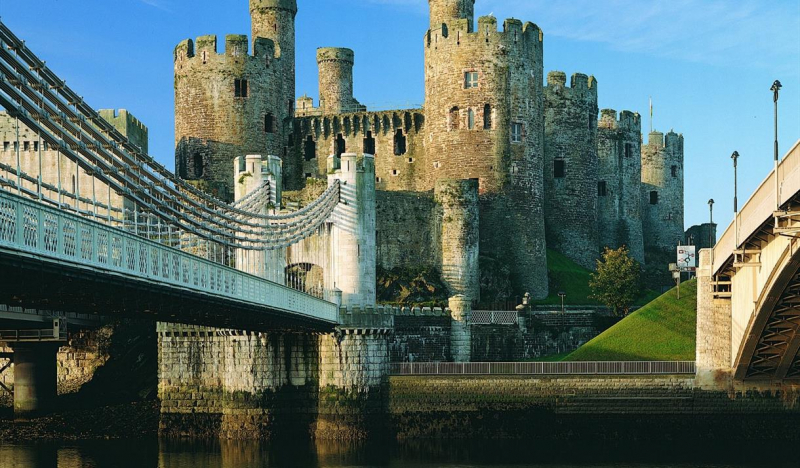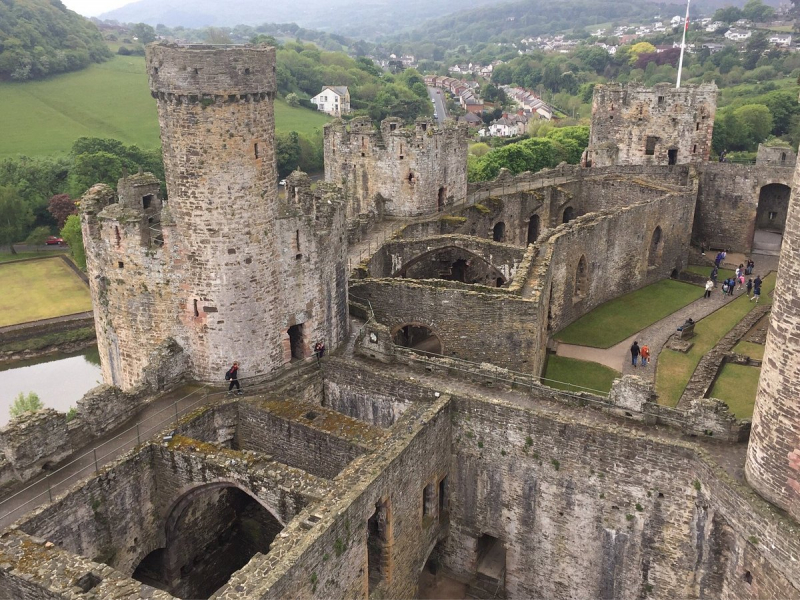Conwy Castle
Conwy Castle is a fortified structure in Conwy, North Wales. Edward I erected it between 1283 and 1287 during his conquest of Wales. Constructed as part of a larger project to build the walled town of Conwy, the total defenses cost roughly £15,000, which was a large sum at the time. Several wars were fought in the castle during the next few centuries. It withstood Madog ap Llywelyn's siege in 1294-95, served as a brief sanctuary for Richard II in 1399, and was held for several months by soldiers loyal to Owain Glyndwr in 1401.
Following the commencement of the English Civil War in 1642, forces loyal to Charles I defended the fortress until 1646 when it surrendered to Parliamentary Forces. In the aftermath, Parliament partially slighted the castle to prevent it from being used in another insurrection, and it was finally entirely demolished in 1665 when its last iron and lead were scraped and sold. In the late 18th and early 19th centuries, Conwy Castle became a popular location for painters. Visitors increased, and early repair work was completed in the second half of the nineteenth century. Cadw manages the destroyed castle as a tourist attraction in the twenty-first century.
Conwy is designated by UNESCO as one of the best examples of late 13th-century and early 14th-century military architecture in Europe, and it is a World Heritage Site. The rectangular castle is made of local and imported stone and sits on a coastal ridge overlooking an important crossing point across the River Conwy. It is divided into two wards and is fortified with eight huge towers and two barbicans, as well as a postern entrance that leads down to the river, allowing the castle to be resupplied from the sea. It has the oldest remaining stone carvings in Britain.
Location: Conwy, in North Wales
















